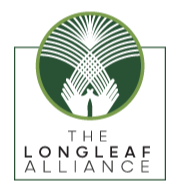Videos and Webinars
Below you can find conservation and working lands videos and webinars developed by our partners. These webinars are meant for a wide range of audiences — from technical experts and practitioners to landowners and the public.
Salamanders - The Hidden Jewels of Appalachia
If you want to hit paydirt the Appalachian region is the world’s salamander El Dorado—home to over 70 salamander species. The Appalachian region of the eastern United States is the world's epicenter for salamander biodiversity.
North American Migratory Bird Joint Ventures: 25 Years
Migratory Bird Joint Ventures are cooperative, regional partnerships that work to conserve habitat for the benefit of birds, other wildlife, and people.
Structured Decison Making Webinar Series
US Fish & Wildlife Service - NCTC Climate Change - Structured Decison Making Webinar Series
US Fish and Wildlife Service - Science Seminar Series - Effects of sea-level rise and altered storminess on Piping Plover breeding habitat along the U.S. Atlantic Coast- January, 2012 - National LCC Event
January 2012 seminar of the five monthly seminar series presented on LCC projects. The January series features Sarah Karpanty's presentation: Effects of sea-level rise and altered storminess on Piping Plover breeding habitat along the U.S. Atlantic Coast.
US Fish and Wildlife Service - Science Seminar Series - Evaluating the Vulnerabilities of Ecological Resources to Climate Change in the Northeast- December, 2011 - National LCC Event
December 2011 seminar of the five monthly seminar series presented on LCC projects. The December series features Dr. Hector Galbraith and Lesley Sneddon's presentation: Evaluating the Vulnerabilities of Ecological Resources to Climate Change in the Northeast.
Assessing the Impact of Projected Housing Density on High Priority Forest Birds
Dr. Todd Jones-Farrand, Science Coordinator, Central Hardwoods Bird Joint Venture
Development by Design
Nels Johnson, Deputy State Director, and Tamara Gagnolet, Spatial Analyst, The Nature Conservancy in Pennsylvannia.
Vulnerability Assessment
Dr. Olivia LeDee, Postdoctoral Associate, University of Wisconsin-Madison, Dept. of Forest and Wildlife Ecology, Madison, Wi.University of Minnesota, Working with the Upper Midwest and Great Lakes LCC
Landscape-scale Conservation Planning
A basic overview of the principles and methods for the Appalachian Landscape Conservation Cooperative, including a discussion on the major goals of landscape conservation. Dr. Rob Baldwin, Professor, Clemson University
The Conservation Resource Webinar
Dr. Kenneth Elowe, Assistant Regional Director US Fish and Wildlife Service Northeast Regional Office, Assistant Regional Director, Science Applications.

























